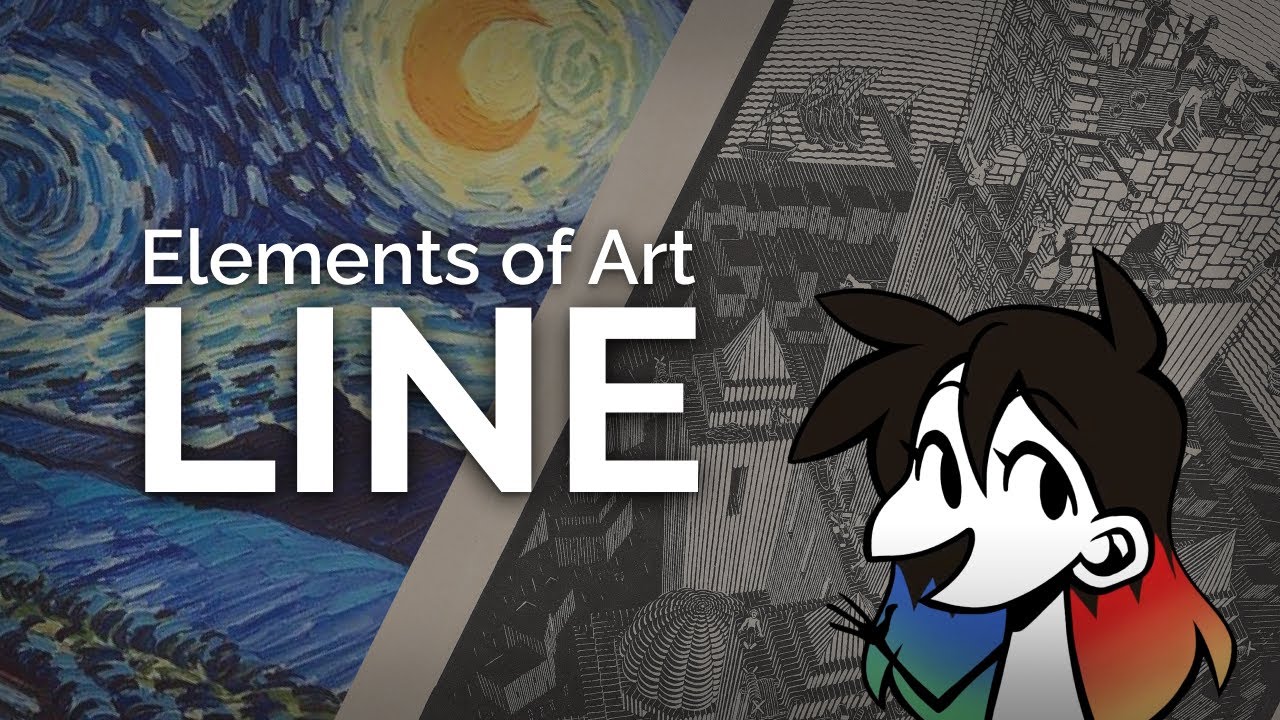Beginners Need to Know This About Cross Hatching - And No One Else is Telling You!
Summary
TLDRIn this instructional video, Steven Travis explores the art of hatching in drawing, emphasizing its versatility and importance for beginners. He demonstrates how hatching can define form, create depth, and suggest texture, using various examples to illustrate the impact of different hatching directions. Travis encourages artists to experiment with hatching techniques to achieve desired effects, stressing there's no single 'correct' way but rather personal choices that enhance clarity and depth in artwork.
Takeaways
- 🎨 Hatching is a versatile technique used to show form, texture, and shadow in drawings, and it's crucial for beginners to understand its potential applications.
- 📏 The direction of hatching lines should reflect the underlying form of the subject being drawn, enhancing the representation of its shape and structure.
- 🌲 In scenes with multiple elements, such as trees, hatching direction helps to differentiate between objects and maintain visual clarity.
- 🛤️ Hatching can also represent the texture and form of surfaces, like the roundedness of a road or the ruts from car wheels.
- 🌳 The choice of hatching direction can bring clarity to complex scenes and emphasize differences between various objects within the scene.
- 🏞️ Hatching can be used to create a sense of depth and distance, with lighter and more tentative marks indicating objects that are further away.
- 🏡 Hatching can help to make certain elements of a drawing 'pop' forward by using darker lines behind them, creating a three-dimensional effect.
- 🏰 In some cases, hatching can be the primary method of creating a drawing, with minimal outlines and more emphasis on the interplay of light and shadow.
- 🖌️ Hatching lines can vary in style, from fine and detailed to thick and animated, depending on the desired visual effect of the drawing.
- 🏔️ Hatching can indicate local color, or the natural color of an object under average lighting conditions, by using varying values.
- 🌲 Hatching is essential for representing shade (the part of an object that light can't reach due to its shape) and shadow (the area where light is blocked by another object).
Q & A
What is the main purpose of the video script?
-The main purpose of the video script is to explain the various purposes and techniques of cross-hatching in drawing, emphasizing the importance of understanding the underlying form, direction, and effects to create clarity and depth in artwork.
Why is it suggested that the question 'What direction do I hatch in?' is the wrong question to ask?
-The question is considered wrong because the direction of hatching should be determined by the specific needs of the subject and the effect the artist is trying to achieve, rather than following a one-size-fits-all rule.
What are some of the purposes for using cross-hatching in drawing as mentioned in the script?
-The purposes include showing the underlying form, creating clarity, indicating edges, suggesting local color, representing shade and shadow, and creating a sense of three-dimensionality.
How does the script suggest using hatching to show the underlying form of a subject?
-The script suggests using hatching to reflect the curved, weathered shapes of the subject, such as the curved hatching around a mountain or the direction of hatching on trees to suggest the overall form and feel of different types of trees.
What is the significance of choosing the right direction for hatching lines?
-Choosing the right direction for hatching lines helps to avoid confusion, bring clarity to the drawing, and emphasize the difference between various objects or elements within the artwork.
How can hatching be used to create a sense of distance in a drawing?
-Hatching can create a sense of distance by using lighter and more sparse marks for objects that are further away, helping to convey the illusion of depth on a two-dimensional surface.
What is the role of hatching in creating a three-dimensional feel in a drawing?
-Hatching can create a three-dimensional feel by using darker hatching behind objects to push them forward, controlling the intensity and density of hatching to suggest depth, and using hatching to define the form and angles of objects.
How does the script discuss the use of hatching to represent local color and shade in a drawing?
-The script explains that hatching can be used to indicate the color something appears under normal lighting conditions, known as local color, and to represent the darker areas of an object that light cannot reach, known as shade.
Why is it important for beginners to understand the possibilities of hatching before attempting complex drawings?
-Understanding the possibilities of hatching allows beginners to apply these techniques to simple subjects, gradually building their skills and confidence before tackling more complex scenes.
What advice does the script give regarding the experimentation with hatching techniques?
-The script encourages artists to experiment with different hatching directions, densities, and effects to find what works best for their intended effect, emphasizing that there is no right or wrong way to hatch, and that the most important thing is to have fun and enjoy the process.
Outlines

このセクションは有料ユーザー限定です。 アクセスするには、アップグレードをお願いします。
今すぐアップグレードMindmap

このセクションは有料ユーザー限定です。 アクセスするには、アップグレードをお願いします。
今すぐアップグレードKeywords

このセクションは有料ユーザー限定です。 アクセスするには、アップグレードをお願いします。
今すぐアップグレードHighlights

このセクションは有料ユーザー限定です。 アクセスするには、アップグレードをお願いします。
今すぐアップグレードTranscripts

このセクションは有料ユーザー限定です。 アクセスするには、アップグレードをお願いします。
今すぐアップグレード5.0 / 5 (0 votes)






